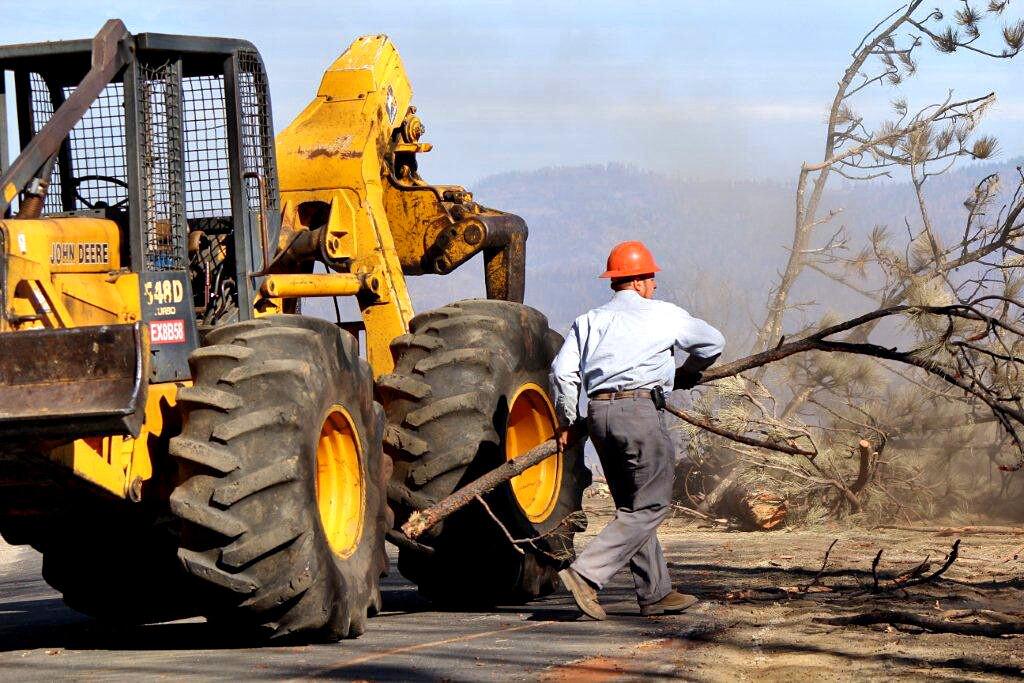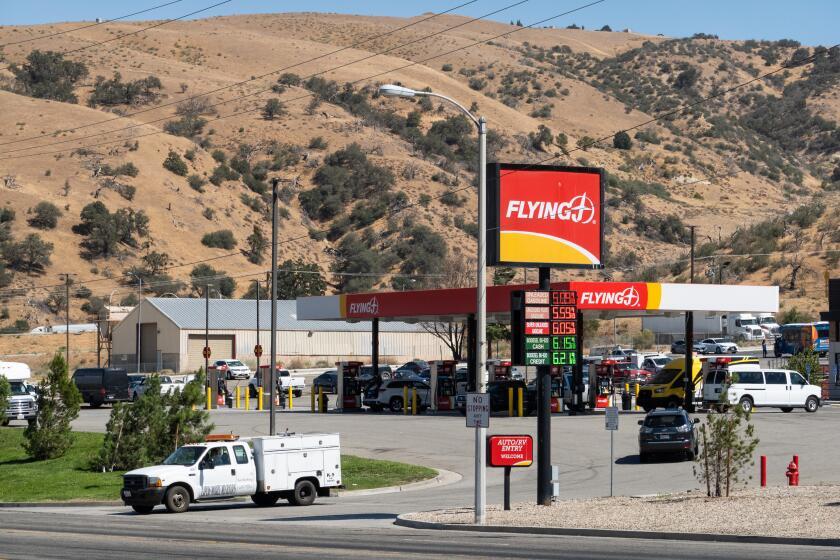Calls for massive salvage logging, restoration and reforestation projects in the 257,000 acres of public wilderness scarred by the massive Rim fire have ignited controversy over how to proceed with the largest recovery effort undertaken in the Sierra Nevada.
Read story
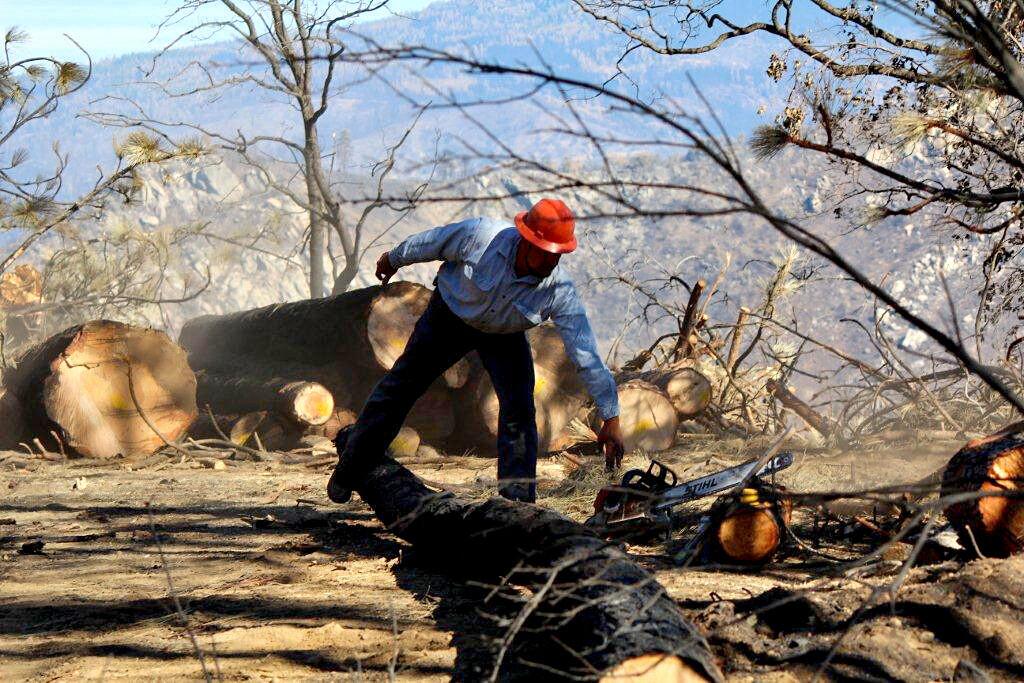
Sam Cover reaches for his chain saw while doing emergency contract work for San Francisco Water and Power. Although no one disagrees with the need for safety in an area so badly damaged by fire that much of it will remain closed for a year or more, there are disagreements about everything else. (Louis Sahagun / Los Angeles Times)
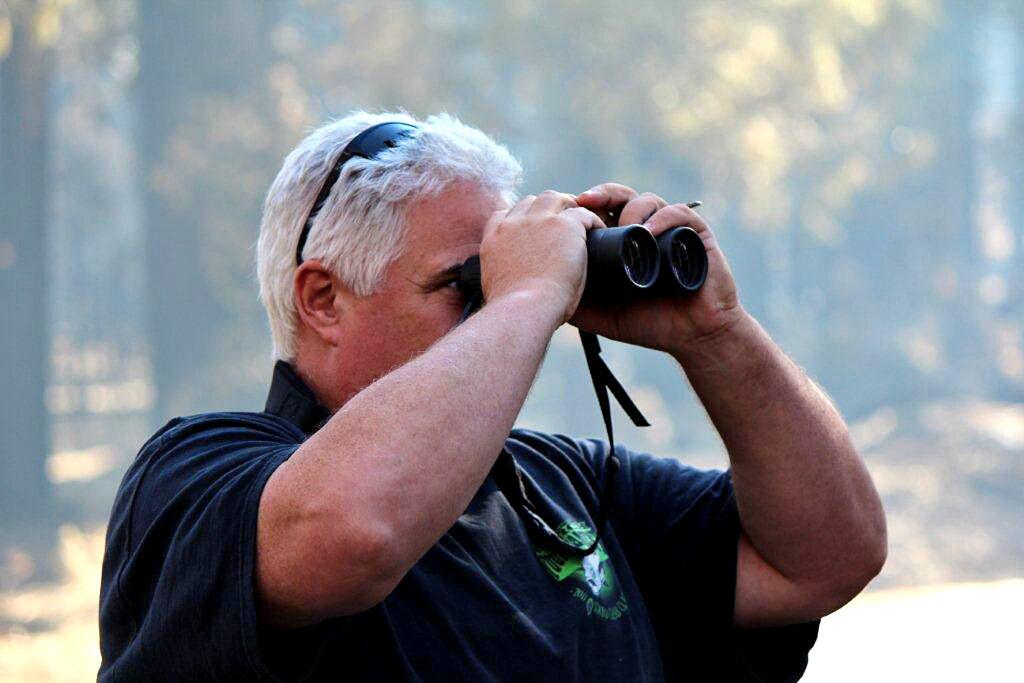
U.S. Forest Service ecologist John Keane peers through binoculars in search of great gray owl nests in a remote portion of the Stanislaus National Forest burned by the Rim fire. The area is a last refuge for a subspecies of great gray owl found nowhere else. (Louis Sahagun / Los Angeles Times)
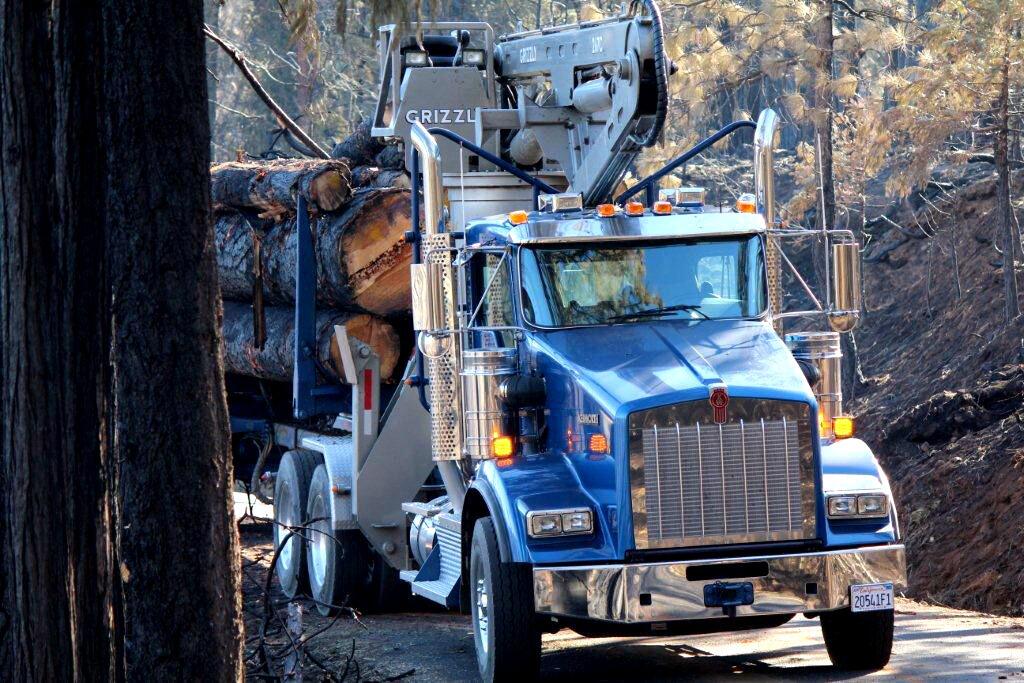
A truck carries salvaged logs out of the Stanislaus National Forest. The Rim fire left behind about 1 billion board feet of salvageable timber, much of which could be rendered worthless by fungus and wood-boring beetles within a matter of months. (Louis Sahagun / Los Angeles Times)
Advertisement
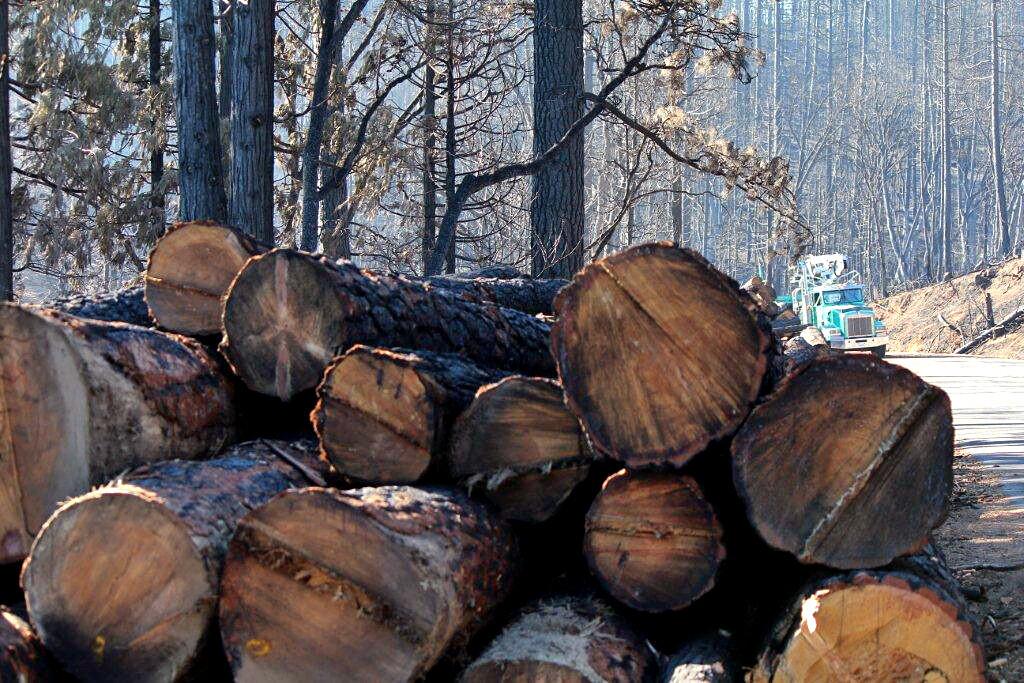
Stack of salvaged logs along Cherry Oil Road near the community of Groveland, about 10 miles west of Yosemite National Park. The logs were cut by crews doing emergency contract work for San Francisco Water and Power. (Louis Sahagun / Los Angeles Times)
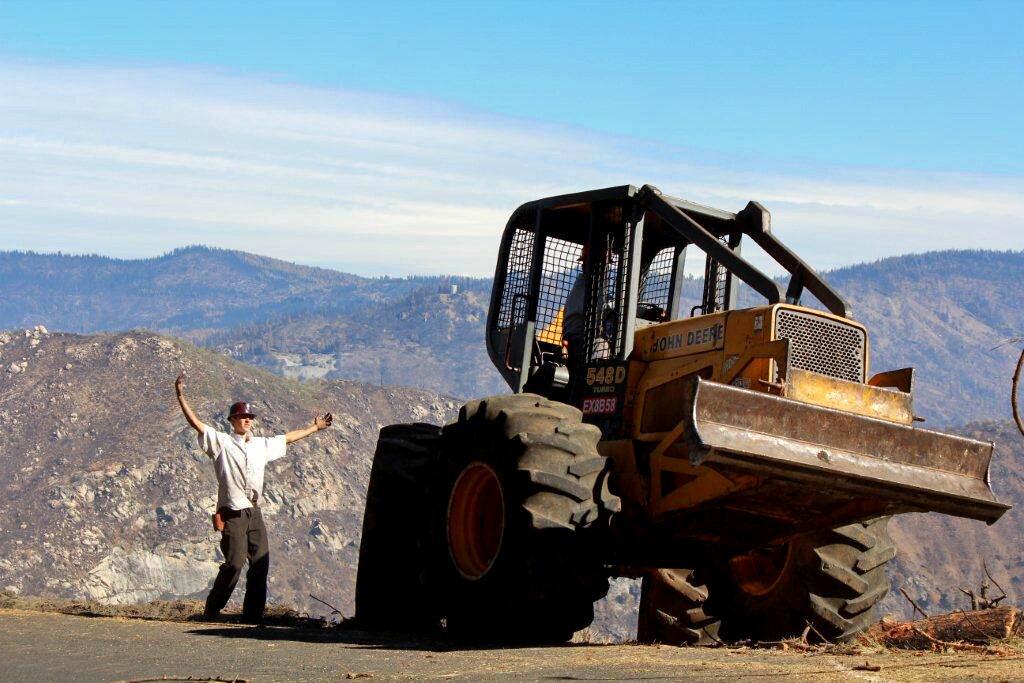
Levi Cover, 16, uses arm signals to help guide his brother Sam to fallen trees and snags. The federal government shutdown could hamper firefighters’ efforts to mop up hot spots smoldering since the fire -- touched off in August by a hunter’s illegal campfire -- burned across the Stanislaus National Forest, Yosemite National Park and private holdings. (Louis Sahagun / Los Angeles Times)
